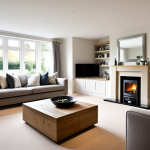Comparing Popular Puppy Training Methods
Choosing the right puppy training methods is crucial for effective learning and bonding. Widely-used training techniques for puppies include positive reinforcement, crate training, and clicker training, each with distinct benefits.
Positive reinforcement rewards desired behaviour with treats or praise, fostering a strong, trusting bond. This method works well for puppies eager to please and thrives in patient, consistent home environments. It’s widely recommended due to its gentle approach and high success rate.
Have you seen this : What are the essential pet care tips for UK first-time pet owners?
Crate training provides puppies a safe, personal space, aiding housebreaking and reducing anxiety. While effective, some puppies resist confinement; understanding your pup’s temperament is key. Proper crate introduction is essential to avoid fear or stress.
Clicker training employs a sound to mark correct actions, immediately followed by a reward. It sharpens puppy focus and accelerates learning but requires timing precision from the owner. This technique suits motivated, quick learners in homes committed to consistent sessions.
Topic to read : How do UK pets affect mental health and well-being?
Selecting from these puppy training methods depends on your pup’s personality and your home’s daily routine. Observing which approach encourages your puppy’s enthusiasm and comfort ensures smoother training progress and lasting results.
Comparing Popular Puppy Training Methods
Understanding various puppy training methods helps tailor approaches to your puppy’s unique needs. Among the most widely used techniques are positive reinforcement, crate training, and clicker training. Positive reinforcement rewards desirable behaviour through treats or praise, encouraging repetition. This method builds a strong bond and is especially effective for puppies responsive to rewards.
Crate training uses a confined space to create a safe environment, assisting in house training and preventing destructive behaviour. It suits puppies needing structure and calm but requires patience during adjustment. Clicker training incorporates a distinct sound to mark desired actions instantly, enhancing communication and precision in obedience training. Puppies attuned to auditory cues often thrive under this approach.
Each training technique for puppies has varied effectiveness depending on personality and home environment. Energetic puppies may respond better to clicker training, while shy ones benefit from the reassurance of crate training. Homeowners should consider their lifestyle and the puppy’s temperament when selecting a method, ensuring consistency and patience throughout the home puppy training process. By evaluating these options carefully, owners can foster positive behaviours efficiently and compassionately.
Pros and Cons of Each Home Puppy Training Approach
Choosing the best puppy training methods involves balancing the puppy training pros and cons of each approach. Positive reinforcement training shines for its gentle, encouraging manner. It motivates puppies without fear and builds trust, essential in early learning stages. However, it demands patience and consistency—a drawback for owners seeking instant results.
Crate training offers clear benefits like aiding housebreaking and providing a safe space. Its limitation lies in puppy resistance; some pups may initially stress or resist confinement, requiring gradual acceptance strategies. Moreover, inappropriate crate use can lead to anxiety, so understanding crate training pros and cons ensures effective application.
Clicker training excels in precise communication, helping puppies grasp commands faster. The key downside is the need for owner timing accuracy and commitment to frequent, short sessions. Not ideal for less attentive trainers, its pros include clear markers that boost focus and faster skill retention.
When selecting training techniques for puppies at home, consider your pup’s temperament and the family’s daily routine. Combining methods while emphasizing positive reinforcement often addresses the puppy training pros and cons effectively, tailoring training for optimal success.
Pros and Cons of Each Home Puppy Training Approach
Understanding the puppy training pros and cons of popular methods clarifies which suits your home best. Positive reinforcement, a widely embraced technique, offers gentle motivation through treats and praise. Its advantages include building trust and encouraging repeat behaviours without fear. However, it demands patience and consistency; without these, puppies may learn slowly or become food-dependent.
Crate training excels at providing a safe haven and effective housebreaking. Advantages include teaching boundaries and reducing anxiety. Yet, it can backfire if introduced abruptly, potentially causing stress or resistance. Puppies with separation anxiety might struggle, requiring gradual acclimation.
Clicker training sharpens communication by pairing a distinct sound with rewards. Its pros include faster learning and clear feedback, especially for motivated pups. The downside lies in its precision – owners must time clicks perfectly, which can be challenging. Without consistent use, it loses effectiveness.
When choosing from the best puppy training methods, consider your puppy’s personality and your daily routine. For example, high-energy, eager learners often thrive with clicker training, while shy or anxious puppies benefit more from the structure and comfort crate training offers. Balancing these factors leads to successful in-home puppy training tailored for lasting results.
Pros and Cons of Each Home Puppy Training Approach
When weighing puppy training pros and cons, it’s clear that each method offers distinct benefits and challenges. Positive reinforcement is widely regarded as one of the best puppy training methods because it encourages good behaviour through rewards like treats or praise. This approach fosters a trusting bond and reduces fear, but it requires patience and consistent effort over time. Those seeking quicker fixes may find this method demanding.
Crate training helps with housebreaking and provides a secure retreat, which can reduce anxiety. However, its drawbacks include the possibility of a puppy resisting confinement or developing stress if introduced improperly. Owners must gradually acclimate their pup to the crate to avoid these issues.
Clicker training offers precise communication by marking correct behaviour swiftly, which can accelerate learning. The downside lies in the need for accurate timing and regular sessions, making it less suitable for busy or less attentive owners.
For successful in-home puppy training, consider your puppy’s temperament and your available time. Combining methods, with an emphasis on positive reinforcement, often balances the benefits and limitations effectively.
Pros and Cons of Each Home Puppy Training Approach
Understanding the puppy training pros and cons of each method helps identify the best puppy training methods for your situation. Positive reinforcement stands out for encouraging good behaviour gently through treats and praise. This approach builds trust and prevents fear but demands patience and consistent effort. Without steady application, puppies might learn slowly or rely too much on food rewards.
Crate training offers structure by creating a safe, confined space which aids housebreaking and calms many puppies. However, its drawbacks include the risk of anxiety if introduced abruptly or if the puppy resists confinement. Gradual, patient acclimation is essential for success. Puppies prone to separation anxiety especially need careful crate introduction to avoid stress.
Clicker training sharpens communication using a distinct sound as a marker followed by a reward. This method accelerates learning and focuses motivated puppies well. Its main limitation is that effective use requires precise timing and frequent training sessions, which may challenge some owners.
Choosing among these puppy training methods depends on your puppy’s personality and your lifestyle. Combining techniques while prioritising positive reinforcement often yields the most effective in-home puppy training results.
Comparing Popular Puppy Training Methods
Understanding the main puppy training methods—positive reinforcement, crate training, and clicker training—helps tailor your approach to your puppy’s needs. Positive reinforcement relies on rewarding good behaviour immediately, encouraging puppies to repeat those actions. This technique fosters strong bonds and works well for motivated pups sensitive to treats or praise.
Crate training creates a secure den-like environment, which aids housebreaking and provides a safe retreat from overstimulation. However, it requires gradual introduction to avoid stress. Puppies with a more anxious nature generally respond better to this structured setting.
Clicker training uses a distinct, consistent sound to mark desired behaviours, followed instantly by a reward. This precise method accelerates learning for puppies who notice auditory cues well and thrive on clear, immediate feedback.
These training techniques for puppies vary in effectiveness depending on temperament and household dynamics. Active, engaged pups may excel with clicker training, while calmer or shy puppies often benefit from crate training’s reassurance. Establishing consistent routines in home puppy training strengthens whichever method you choose, ensuring productive communication and enduring obedience.
Step-by-Step Guide to Home Puppy Training Success
Achieving success with home puppy training starts by establishing a clear, consistent routine. How to train a puppy at home most efficiently? Begin by setting scheduled training sessions daily, lasting about 5 to 10 minutes each to maintain your puppy’s attention. Consistency in timing and environment helps your puppy associate specific behaviours with rewards.
Next, focus on teaching basic commands such as “sit,” “stay,” and “come.” Repetition combined with immediate positive reinforcement strengthens learning. The puppy training guide advises using treats or praise right after your puppy performs the desired action to reinforce the behaviour effectively.
Socialisation exercises are also critical. Gradually exposing your puppy to new people, sounds, and other animals fosters confidence and well-adjusted behaviour. Introducing these experiences in low-stress settings encourages positive associations.
Using rewards and gentle corrections appropriately balances motivation and discipline. Keep corrections brief and avoid harsh punishment, as it can undermine trust. Instead, redirect unwanted behaviour and reward calm, desired actions.
By following a step-by-step puppy training plan, owners can nurture well-behaved puppies and streamline training techniques for puppies at home, creating a foundation for lifelong obedience and companionship.
Comparing Popular Puppy Training Methods
Among the most effective puppy training methods are positive reinforcement, crate training, and clicker training, each catering to different needs within home puppy training. Positive reinforcement is widely favored for encouraging desired behaviours by rewarding puppies with treats or praise immediately. This technique fosters motivation and trust, especially in puppies responsive to rewards.
Crate training offers a structured environment by creating a personal, secure space, aiding housebreaking and reducing anxiety. Its effectiveness depends heavily on gradual introduction and the puppy’s temperament, making it suitable for pups who benefit from routine and calm settings.
Clicker training uses a distinct sound to mark correct behaviours instantly, followed by rewards. This sharpens communication between owner and puppy, ideal for motivated learners who respond well to auditory cues. Precision and consistent timing are critical here.
The differences between these training techniques for puppies become clear when considering personality types. Active puppies often excel with clicker training, while anxious or shy pups may thrive more with crate training. Positive reinforcement acts as a versatile foundation, easily combined with other methods for balanced home puppy training routines.
Comparing Popular Puppy Training Methods
Several puppy training methods dominate the landscape: positive reinforcement, crate training, and clicker training. Positive reinforcement rewards good behaviour immediately with treats or praise, making it a favourite for encouraging repeat actions and building trust. This technique suits puppies motivated by rewards and thrives with patient, consistent owners.
Crate training creates a secure space for puppies, aiding housebreaking and reducing anxiety. It is especially effective for pups needing structure but requires careful, gradual introduction to avoid stress or resistance. Puppies with calmer or shy temperaments often benefit most from this approach.
Clicker training uses a distinct sound to mark correct behaviour, followed promptly by a reward. This method accelerates learning and improves communication, particularly with puppies attuned to auditory cues. However, it demands precise timing and commitment from the owner.
Choosing among these training techniques for puppies hinges on your pup’s personality and your home environment. Energetic, quick learners may excel with clicker training, while shy or anxious puppies respond better to crate training’s reassurance. Positive reinforcement complements all methods by reinforcing desired behaviour during home puppy training, ensuring both efficiency and compassion.
Comparing Popular Puppy Training Methods
Widely used puppy training methods include positive reinforcement, crate training, and clicker training, each tailored to different needs in home puppy training. Positive reinforcement rewards puppies immediately for good behaviour, using treats or praise. This method fosters trust and encourages repetition, making it effective for motivated and patient owners.
Crate training creates a safe, confined space for puppies, aiding housebreaking and reducing anxiety. Its success relies on gradual introduction and understanding your puppy’s temperament. Puppies needing structure or prone to stress often respond well, though abrupt confinement can backfire.
Clicker training marks desired behaviours with a distinct sound followed by a reward, improving communication clarity. It accelerates learning but requires precise timing and consistent practice. Active or sharp learners often benefit most.
Selecting the right training techniques for puppies depends on individual personality and household routines. For instance, energetic puppies might excel with clicker training’s rapid feedback, while shy or anxious pups often thrive with crate training’s calm environment. Positive reinforcement complements both, providing a versatile foundation for effective home puppy training tailored to your pup’s unique needs.







